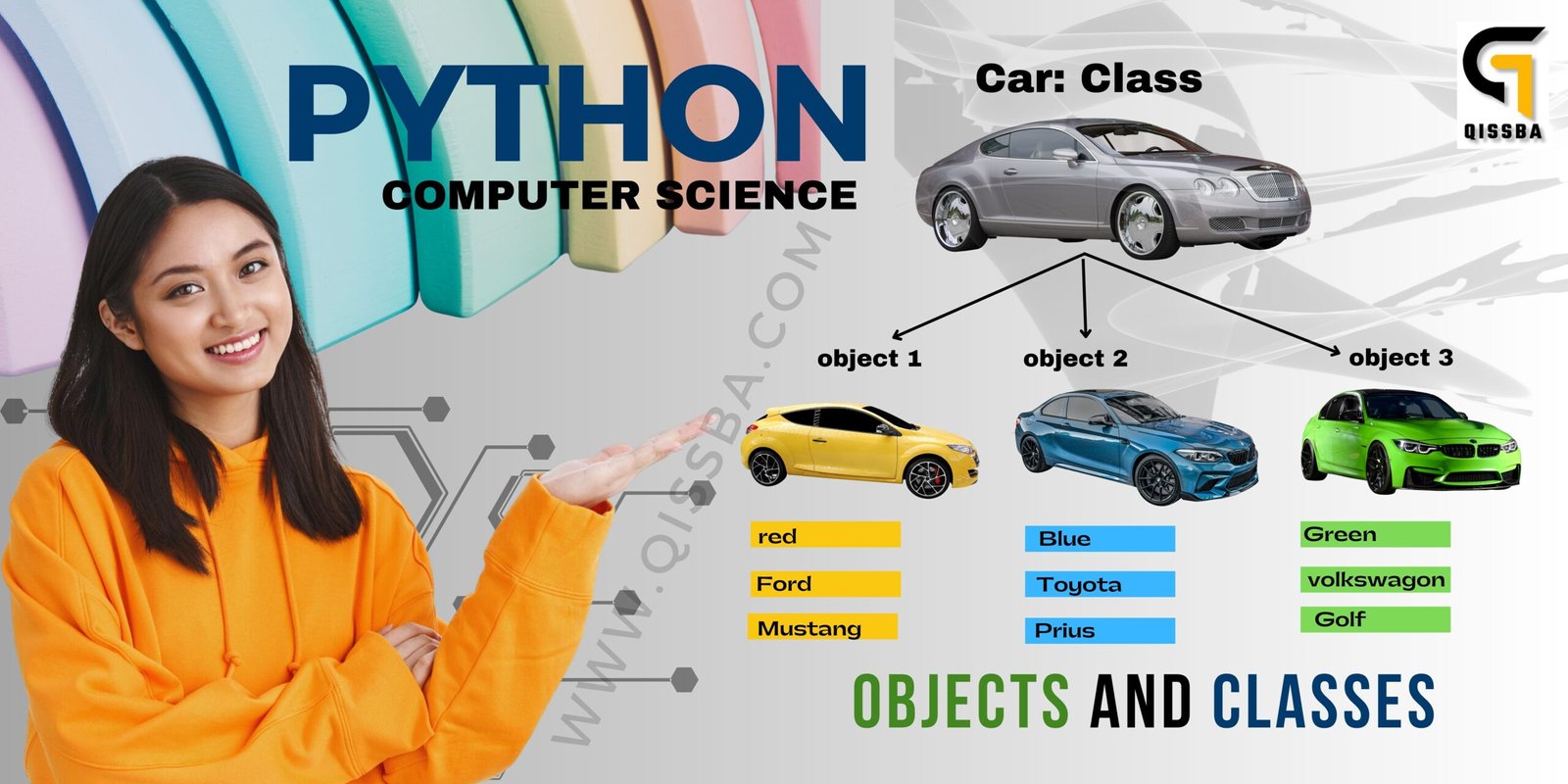
Classes and Objects in Python | CBSE – Class 12
Understanding Python Classes and Objects:
Introduction
If you’re new to Python programming, you’ve likely heard about classes and objects. These concepts are at the heart of object-oriented programming (OOP), which is a popular programming paradigm that enables programmers to create reusable and modular code. In this comprehensive guide, we’ll explore everything you need to know about Python classes and objects.
What are Classes and Objects in Python?
In Python, a class is a blueprint or template for creating objects. It defines a set of attributes and methods that are shared by all instances of the class. An object, on the other hand, is an instance of a class, which has its own set of attributes and methods.
Creating a Class in Python
To create a class in Python, use the class keyword followed by the name of the class. For example, let’s create a class called Person:
class Person:
pass
This creates a basic class with no attributes or methods. To add attributes and methods, you can define them inside the class using functions.
Creating Objects from a Class in Python
To create an object from a class, you can simply call the class name followed by parentheses. For example, to create a Person object, you can do the following:
person1 = Person()
This creates a Person object named person1. You can create as many objects as you need from a single class.
Using Attributes and Methods in a Class of Python
One of the main benefits of using classes and objects is that you can define attributes and methods that are specific to a particular object. To define an attribute, you can simply assign a value to a variable in the class. For example:
class Person:
def __init__(self, name, age):
self.name = name
self.age = age
This creates a Person class with two attributes: name and age. To define a method, you can use the def keyword followed by the name of the method. For example:
class Person:
def __init__(self, name, age):self.name = name
self.age = agedef say_hello(self):
print(f"Hello, my name is {self.name} and I'm {self.age} years old.")
This creates a say_hello method that prints out a message containing the person’s name and age.
In conclusion, understanding Python classes and objects is an essential part of object-oriented programming. By defining classes, creating objects, and using attributes and methods, you can create powerful and flexible programs. This comprehensive guide should provide you with everything you need to get started with Python classes and objects.
Exam Time
Here are some important questions and answers on the topic “Understanding Python Classes and Objects”
Question 1: What is a class in Python?
Answer: In Python, a class is a blueprint or template for creating objects. It defines a set of attributes and methods that are shared by all instances of the class.
Question 2: What is an object in Python?
Answer: An object in Python is an instance of a class. It has its own set of attributes and methods that are specific to that object.
Question 3: How do you create a class in Python?
Answer: To create a class in Python, use the class keyword followed by the name of the class. For example, class MyClass: creates a class called MyClass.
Question 4: How do you create an object from a class in Python?
Answer: To create an object from a class in Python, you can simply call the class name followed by parentheses. For example, my_object = MyClass() creates an object named my_object from the MyClass class.
Question 5: What are attributes in Python classes?
Answer: Attributes in Python classes are variables that hold data associated with a particular class or object. They can be accessed and modified using dot notation.
Question 6: What are methods in Python classes?
Answer: Methods in Python classes are functions that are associated with a particular class or object. They can be called to perform specific actions on the data associated with the class or object.
Question 7: How do you define attributes and methods in a Python class?
Answer: To define attributes and methods in a Python class, you can simply define them inside the class using functions. For example, def my_method(self): defines a method called my_method in a class.
Question 8: What is object-oriented programming (OOP) in Python?
Answer: Object-oriented programming (OOP) in Python is a programming paradigm that uses classes and objects to organize and structure code. It allows for reusable and modular code that is easy to maintain and extend.
Question 9: What are the benefits of using Python classes and objects?
Answer: The benefits of using Python classes and objects include creating modular and reusable code, improved organization and structure, and the ability to define attributes and methods that are specific to a particular object.
Question 10: Can you have multiple objects of the same class in Python?
Answer: Yes, you can have multiple objects of the same class in Python. Each object will have its own set of attributes and methods that are specific to that object.
Question 11: What is the self parameter in Python class methods?
Answer: The self parameter in Python class methods refers to the object that the method is being called on. It is a convention in Python to use self as the first parameter name in methods.
Question 12: How do you access attributes and methods of an object in Python?
Answer: To access attributes and methods of an object in Python, use dot notation. For example, my_object.my_attribute would access the attribute my_attribute of the my_object object.
Question 13: What is inheritance in Python classes?
Answer: Inheritance in Python classes allows you to create a new class based on an existing class. The new class inherits all the attributes and methods of the existing class, and can add new attributes and methods or override existing ones.
Question 14: What is polymorphism in Python classes?
Answer: Polymorphism in Python classes allows you to define methods with the same name in different classes, and have them behave differently based on the object they are called on. This allows for more flexible and dynamic code.
Question 15: How do you override a method in a subclass in Python?
Answer: To override a method in a subclass in Python, define a new method with the same name in the subclass. The new method will override the method with the same name in the superclass.
—————————————————————————————————————————————————-
Are you a student of CBSE Board for Classes 11th and 12th,
Do you want to learn Complete Python Programming
Try our free Computer Science with Python Courses for free


